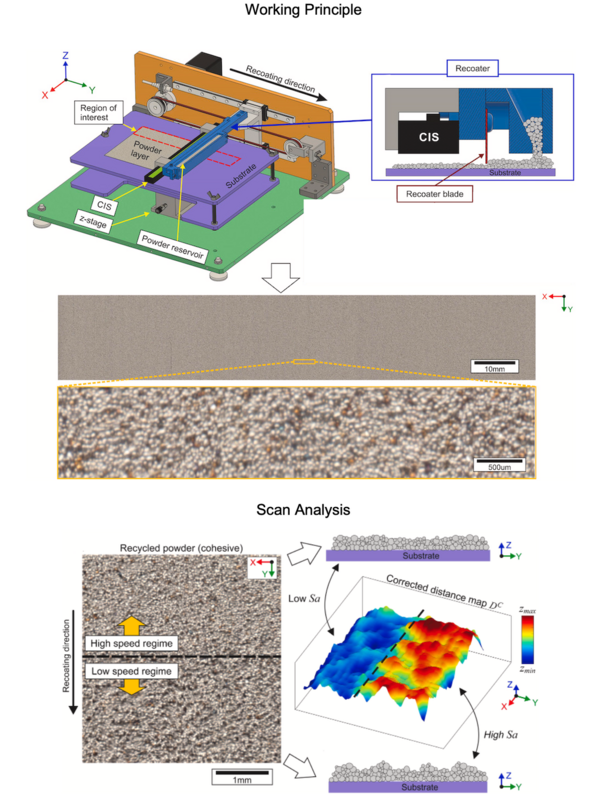Characterization of Powders for AM
The Powder Bed Scanner

The quality and uniformity of the powder layer have a direct impact on the performance of parts produced via powder bed fusion (PBF). Because powder layer properties depend on many powder- and recoating-specific variables, it is difficult to accurately predict powder bed quality across the variety of PBF processes and powders currently available. At the AddME Lab, we have developed a new method to assess the powder bed quality as a function of both powder conditions and recoating strategy (i.e., recoater blade type, translation speed, etc.). The method—referred to as powder bed scanner (PBS)—relies on a contact image sensor unit (the very same that is found in commercial document scanners) attached to the powder recoater arm. The PBS provides particle-level resolution images of the entire powder layer as it is recoated.
We define different metrics to quantify the powder bed quality, including the powder layer thickness uniformity, surface area roughness, surface particle density, and particle contamination level. All these metrics can be computed through numerical analysis of the acquired PBS scans. In our publications, we demonstrate how, changing the powder recoating strategy and/or the powder batch used, can lead to significantly different powder bed quality. We also show that the PBS can be used as a high-fidelity monitoring strategy to assess the oxygen uptake of powders during PBF processes. We leverage all such capabilities to link powder bed quality to the resulting density, microstructure, and mechanical properties of the materials produced by PBF (especifically laser-PBF).
Owing to its high measurement throughput, low cost, and versatility, the PBS is an ideal candidate technique to provide systematic powder analysis both ex-situ as well as during PBF processes. The information acquired through the PBS may be used to test different powder batches and recoating configurations, or it may be fed back into the 3D printer controller to adapt the processing parameters on the fly during additive manufacturing.
